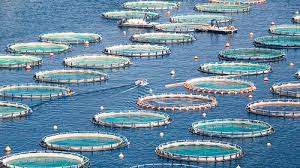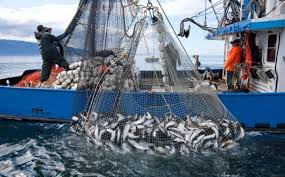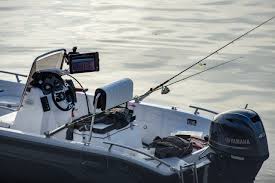Marine fisheries play a vital role in global food security, economic stability, and cultural identity. They encompass the harvesting of fish and other marine organisms from the ocean, providing livelihoods for millions of people worldwide. This introduction explores the significance, challenges, and sustainability of marine fisheries in today’s rapidly changing environment.
The oceans cover over 70% of the Earth’s surface, harboring a vast array of marine life that supports diverse ecosystems. Marine fisheries have historically been a primary source of protein for billions of people, particularly in coastal communities where fish constitutes a significant part of the diet.
Beyond food security, marine fisheries contribute to local economies through fishing, processing, and trade, supporting both artisanal and industrial fishing sectors.
However, marine fisheries face numerous challenges. Overfishing, driven by rising demand and unsustainable fishing practices, threatens fish populations and the ecosystems they inhabit. According to the Food and Agriculture Organization (FAO), nearly 34% of global fish stocks are overfished, while another 60% are fully exploited.
This decline in fish populations not only impacts biodiversity but also jeopardizes the livelihoods of communities that depend on fishing for their income.
Climate change further exacerbates the situation by altering ocean temperatures, currents, and acidity levels, which affect the distribution and reproduction of fish species. Warmer waters can lead to shifts in fish populations, pushing some species toward cooler regions while making others more vulnerable to diseases. These changes pose additional challenges for fishers who rely on stable fish stocks for their livelihoods.
Sustainability is paramount for the future of marine fisheries. Effective management practices, including the establishment of marine protected areas (MPAs), quota systems, and gear restrictions, are essential to ensure the long-term health of fish stocks and marine ecosystems.
Collaborative efforts between governments, communities, and international organizations are vital to implement sustainable fishing practices and combat illegal, unreported, and unregulated (IUU) fishing.
The role of technology in enhancing marine fisheries cannot be overlooked. Innovations such as satellite monitoring, data analytics, and eco-labeling are transforming the industry. These tools help track fish populations, improve compliance with regulations, and promote sustainable seafood choices among consumers. Public awareness and education are also crucial in encouraging responsible fishing practices and protecting marine habitats.
Marine fisheries are integral to global food systems, economies, and cultures. However, they face significant challenges that threaten their sustainability and the livelihoods of those who depend on them. By prioritizing sustainable practices and embracing innovative solutions, we can ensure that marine fisheries continue to thrive for future generations.
Through collaborative efforts and a commitment to stewardship, we can protect our oceans and the vital resources they provide. The path forward requires a shared vision of sustainability, where the needs of people and the health of marine ecosystems go hand in hand.
Importance of Marine Fisheries

1. Food Security: Marine fisheries provide a significant source of protein for billions of people worldwide. They are vital for the diets of many coastal communities, contributing to food security and nutrition.
2. Economic Contribution: The fishing industry supports millions of jobs globally, providing livelihoods for fishermen, processors, and those involved in distribution. It also contributes significantly to the economies of many countries, especially those heavily reliant on seafood exports.
3. Cultural Significance: Fishing has cultural importance for many communities, forming part of their heritage and traditions. Coastal and island communities often have deep-rooted connections to the sea, which are reflected in their customs, cuisine, and lifestyles.
4. Biodiversity and Ecosystem Health: Marine fisheries contribute to the maintenance of biodiversity and ecosystem balance. Healthy fish populations help regulate aquatic ecosystems, promoting overall marine health.
Types of Marine Fisheries
1. Commercial Fisheries: These fisheries focus on catching fish for sale and profit. They can range from large-scale operations, like trawlers and factory ships, to small coastal fishing enterprises. Species targeted include tuna, cod, and shrimp.
2. Artisanal Fisheries: Often characterized by small-scale, traditional fishing methods, artisanal fisheries are usually operated by local communities. They often focus on subsistence fishing, providing food for local populations while using sustainable practices.
3. Recreational Fisheries: This type of fishing is conducted for leisure rather than for profit. Recreational fishing can have economic benefits through tourism, equipment sales, and licensing fees, but it can also lead to overfishing if not properly managed.
4. Aquaculture: While not strictly a fishery, aquaculture involves the farming of fish and other aquatic organisms. This practice can help alleviate pressure on wild fish stocks and provide a sustainable source of seafood.
Sustainable Fishing Practices
1. Catch Limits and Quotas: Implementing catch limits helps ensure that fish populations remain healthy and can reproduce effectively. Sustainable quotas are based on scientific assessments of fish stocks to prevent overfishing.
2. Selective Fishing Gear: Using gear designed to minimize bycatch (the unintended capture of non-target species) can reduce the impact on marine ecosystems. Examples include circle hooks and escape devices in traps.
3. Marine Protected Areas (MPAs): Establishing MPAs helps conserve fish habitats and allows ecosystems to recover. These areas can provide safe breeding grounds for fish, enhancing overall biodiversity.
4. Community-Based Management: Engaging local communities in fishery management can lead to more effective and sustainable practices. Local knowledge and involvement can help tailor regulations to specific regional needs.
5. Education and Awareness: Raising awareness about the importance of sustainable fishing practices among fishermen and consumers can promote responsible behaviors. Encouraging the choice of sustainably sourced seafood helps drive demand for eco-friendly practices.
Read Also: 14 Medicinal Health Benefits of Epimedium grandiflorum (Horny Goat Weed)
The Impact of Overfishing

1. Depletion of Fish Stocks: Overfishing leads to the significant reduction of fish populations, making it difficult for species to recover. This depletion threatens the availability of fish for future generations.
2. Ecosystem Imbalance: Removing large quantities of fish disrupts the marine food web, affecting other species and leading to ecosystem imbalances. Predatory and prey relationships are altered, impacting overall biodiversity.
3. Economic Consequences: Fishermen and communities dependent on fishing face economic hardships when fish stocks decline. Reduced catches lead to lower incomes, job losses, and potential economic collapse in fishing-dependent regions.
4. Bycatch Issues: Overfishing often involves the capture of non-target species (bycatch), leading to the decline of these populations. This further disrupts marine ecosystems and affects biodiversity.
Marine Fish Species and Their Habitats
1. Pelagic Species: These fish live in the open ocean and include species like tuna, mackerel, and sardines. They inhabit the water column and are essential for marine food webs.
2. Demersal Species: Living near the sea floor, demersal fish such as cod, flatfish, and hake rely on benthic habitats. These species are often targeted by bottom trawlers, which can damage their habitats.
3. Reef Fish: Coral reefs support diverse marine life, including species like snapper and grouper. These fish are vital for reef health and rely on complex habitats for food and shelter.
4. Migratory Species: Some fish, such as salmon and eels, migrate between freshwater and saltwater habitats. Protecting their migratory routes is crucial for their survival and reproductive success.
Fishing Methods and Techniques
1. Trawling: This method involves dragging nets along the sea floor or through the water column. While efficient, trawling can cause significant habitat damage and high bycatch rates.
2. Longlining: This technique uses a main line with multiple baited hooks attached. Longlining can target specific species but also risks catching non-target species, including sea turtles and seabirds.
3. Purse Seining: A large net is used to encircle schools of fish. This method can effectively capture large quantities of fish but can also result in bycatch if not managed properly.
4. Trap Fishing: Fish traps are used to capture various species. This method can be more selective and minimize bycatch, making it a more sustainable option when managed correctly.
Regulations and Policies in Marine Fisheries
1. Quotas and Catch Limits: Governments set quotas based on scientific assessments to prevent overfishing. These limits help maintain sustainable fish populations and ensure long-term viability.
2. Seasonal Closures: Implementing closed seasons allows fish populations to reproduce and recover. This strategy is vital for species that have specific breeding periods.
3. Licensing and Permits: Regulating who can fish and under what conditions helps manage fishery resources. Licensing systems ensure compliance with regulations and promote responsible fishing practices.
4. International Agreements: Collaboration between countries is essential for managing migratory and shared fish stocks. Agreements like the United Nations Convention on the Law of the Sea (UNCLOS) provide frameworks for sustainable fishing practices.
Read Also: 10 Medicinal Health Benefits of Podocarpus henkelii (Henkel’s Yellowwood)
The Role of Technology in Fishing

1. Improved Fish Tracking: Modern fish finders and sonar technology allow fishermen to locate schools of fish more accurately. This reduces the time and fuel spent on fishing trips, making operations more efficient.
2. Sustainable Fishing Practices: Technologies such as satellite monitoring and electronic reporting systems help track fishing activities and ensure compliance with regulations. These tools promote sustainable fishing by preventing overfishing and protecting marine ecosystems.
3. Aquaculture Innovations: Advancements in aquaculture technology, such as automated feeding systems and water quality monitoring, enhance the efficiency and sustainability of fish farming operations, helping meet global seafood demand.
4. Genetic Research: Biotechnology plays a crucial role in developing disease-resistant and faster-growing fish species. This research contributes to the sustainability of fish populations and helps ensure a reliable food supply.
Economic Importance of Marine Fisheries
1. Job Creation: Marine fisheries provide millions of jobs worldwide, supporting coastal communities and contributing to local economies. Fisheries and aquaculture are significant sources of employment for many regions, particularly in developing countries.
2. Contribution to GDP: The fishing industry significantly contributes to the gross domestic product (GDP) of many coastal nations. Marine fisheries support not only fish production but also related industries, including processing, distribution, and retail.
3. Food Security: Marine fisheries are a critical source of protein for billions of people worldwide. They provide essential nutrients and contribute to food security, particularly in regions where alternative protein sources are limited.
4. Export Earnings: Many countries rely on marine fisheries for export revenue. Fish and seafood products are among the most traded commodities globally, contributing to economic growth and foreign exchange earnings.
Challenges Facing Marine Fisheries
1. Overfishing: Unsustainable fishing practices lead to the depletion of fish stocks, threatening the long-term viability of marine fisheries. Overfishing affects the balance of marine ecosystems and reduces the availability of fish for future generations.
2. Climate Change: Rising sea temperatures, ocean acidification, and changing weather patterns affect fish habitats and migration patterns. Climate change poses significant risks to fish populations and the communities that rely on them.
3. Pollution: Marine pollution, including plastic waste and chemical runoff, impacts fish health and reproductive success. Contaminated water affects both wild fish populations and aquaculture operations, threatening food safety and marine biodiversity.
4. Regulatory Challenges: Inconsistent regulations and enforcement across countries complicate the management of shared fish stocks. Illegal, unreported, and unregulated (IUU) fishing undermines conservation efforts and threatens sustainable fishing practices.
Do you have any questions, suggestions, or contributions? If so, please feel free to use the comment box below to share your thoughts. We also encourage you to kindly share this information with others who might benefit from it. Since we can’t reach everyone at once, we truly appreciate your help in spreading the word. Thank you so much for your support and for sharing!
Read Also: Six Health Benefits of Sugarcane Juice






